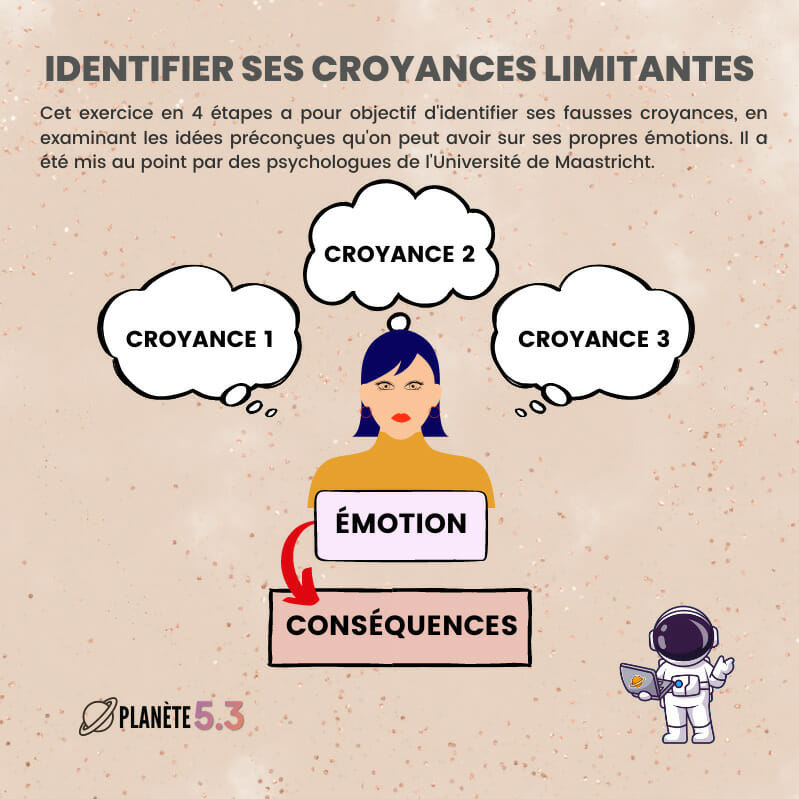Fear is an emotion that forces us to be cautious. But is she still a good adviser? Certainly not ! It often prevents us from making necessary decisions or taking action. So, faced with the options that present themselves to us on a daily basis, should we not identify our fears before even setting objectives?
It often happens that we back away from a situation that frightens us. It’s normal, the primary function of this emotion of fear is to protect us from dangerous situations.
Why identify your fears?
It was fear that saved many of our ancestors in the face of a fire or the attack of a saber-toothed tiger (the main predator of the homo genus 1 or 2 million years ago).
Today, the risks of crossing a tiger are quite limited, especially a specimen with saber teeth… We can then wonder if all our fears are justified and whether they are motivated by an accurate perception of reality. In other words, is it the reality of the situation that presents risks or is it my perception of it?
Tim Ferriss is the author of the bestselling The 4 hour week. A few years ago, he proposed a simple and extremely effective method to take a step back, face your fears and turn them into goals.
This method consists of five steps:
1. What I want to do specifically
Start by writing a list of 10 things what you would like to do: a situation that makes you want to and which, at the same time, scares you and in front of which you feel a real blockage. For example :
- I want to change job or company and I can’t.
- I want to start studying and I think it’s not for me.
- I have to give a presentation in front of 50 people and it’s a nightmare.
- The mere idea of going to this party makes me sick.
2. How I see the situation
For each item on the list, examine the situation by describing it as precisely as possible: where am I, with whom, what am I doing, what is going on? Also describe the emotion you feel in this situation, the thoughts that come to mind. Consider what in this situation is within your control and what is not.
Ask yourself, for example, the following questions and take the time to reflect:
- Why haven’t I done this yet?
- What’s holding me back or prevent me?
- Which is my biggest fear in this situation ?
3- The different possible scenarios
Next, take a sheet of paper and create a table with 3 columns:
In the first column labeled ” To define“, for each of the items on the list you define the worst things that could happen: what would happen if… I changed jobs/I went to this party…
In the second column labeled ” Prevent“, you think pragmatically about how to prevent these events from happening or, at least, to reduce the likelihood of them happening.
In the third column labeled ” To fix“, you think of a practical solution to “repair” the damage and manage the consequences if the situation occurs. Who will you turn to for help, for example?
Let’s take a deliberately caricatural example to understand the principle : you want to change jobs to evolve in a sector that interests you and you are afraid to take the plunge because you take the risk, by resigning, of losing your income.
4. The benefits of giving it a shot
Once this exercise is done, take a second blank page to list, as exhaustively as possible, what Tim Ferris calls the “benefits of an attempt or partial success”. You will note that he takes tweezers and does not speak of “total success” but of “partial success”. We must remain cautious before speaking of success and stick to evaluating the benefits at least.
To continue with our example above, it could look like:
- Take the opportunity to take the time to breathe and make a personal assessment or a skills assessment professionals.
- Regain energy by getting up every morning to take an interest in a motivating project.
- Prospecting to find a better paid job or closer to my home.
- Etc.
5. What if I do nothing?
We all tend to see what we risk losing by changing our lives or profession, but we rarely wonder about the cost of inaction. On a third page you will therefore list, objectively, the possible consequences of a status quo on the emotional, physical and financial levels at 6 months, one year and three years.
In our example, it could be:
- Low morale, which could end up causing marital or health problems.
- Demotivation related tolack of prospects devolution.
- The impossibility of moving to the region of your heart.
- Etc.
Identifying your fears allows you to understand why it is difficult to take action. It will help you put words to your blockages and start considering solutions to deal with it.
By identifying your fears in a methodical way, you will manage your emotions, gain serenity and confidence. You will give yourself the means to make informed decisions, more in line with your values and your goals.
Another benefit (and not the least), you may have the click to get out of your comfort zone, which will necessarily be beneficial for your personal and professional development.
And if you think your fear is legitimate, you can start the exercise again in 6 months or a year…















